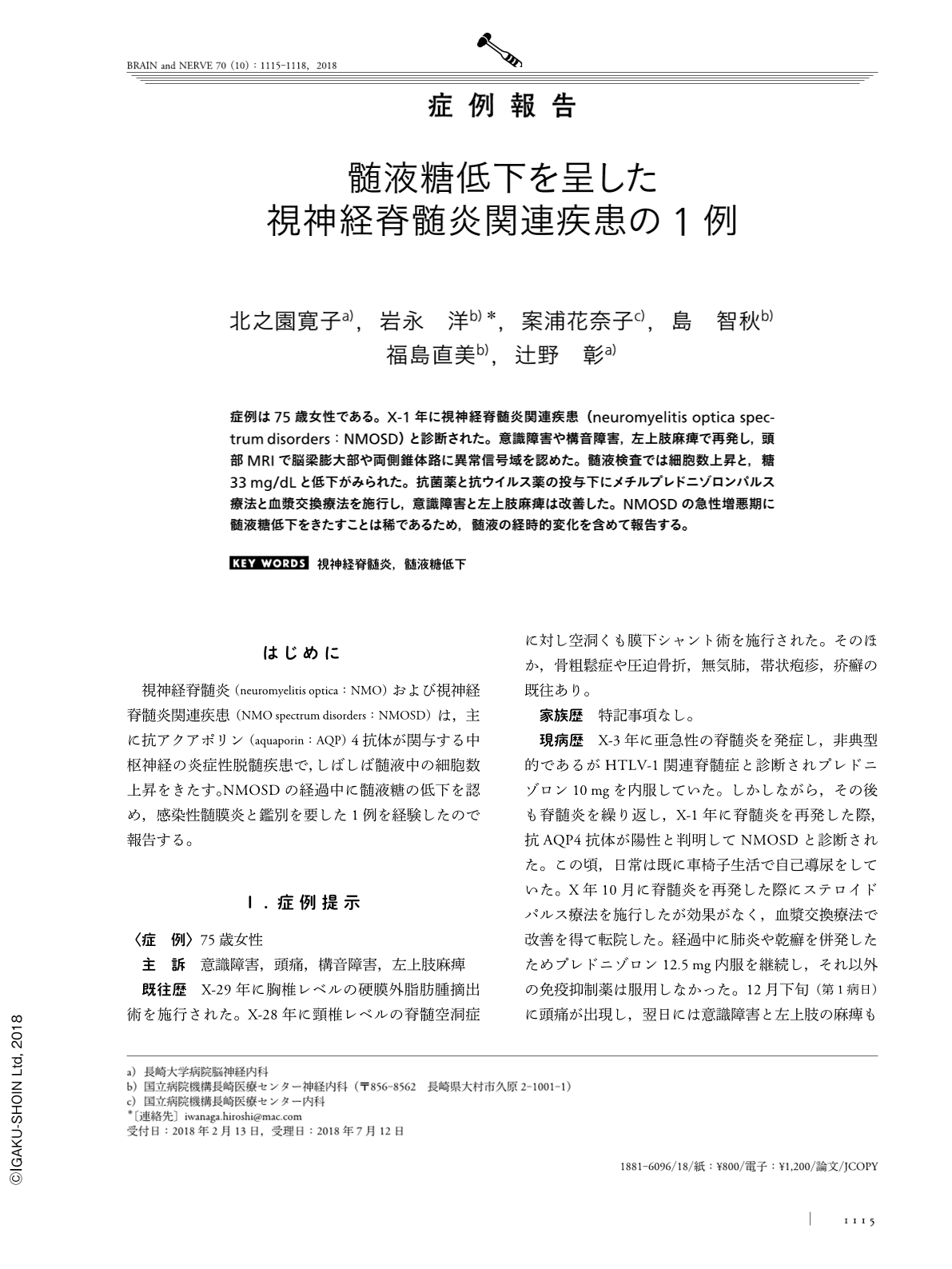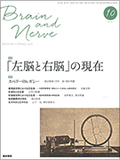Japanese
English
- 有料閲覧
- Abstract 文献概要
- 1ページ目 Look Inside
- 参考文献 Reference
症例は75歳女性である。X-1年に視神経脊髄炎関連疾患(neuromyelitis optica spectrum disorders:NMOSD)と診断された。意識障害や構音障害,左上肢麻痺で再発し,頭部MRIで脳梁膨大部や両側錐体路に異常信号域を認めた。髄液検査では細胞数上昇と,糖33mg/dLと低下がみられた。抗菌薬と抗ウイルス薬の投与下にメチルプレドニゾロンパルス療法と血漿交換療法を施行し,意識障害と左上肢麻痺は改善した。NMOSDの急性増悪期に髄液糖低下をきたすことは稀であるため,髄液の経時的変化を含めて報告する。
Abstract
A 75-year-old Japanese woman developed myelitis 3years prior to her admission. She was diagnosed with HTLV-1-related myelitis and had taken prednisolone. Her myelitis relapsed several times, and serum aquaporin-4 was positive in an ELISA. She developed a sudden headache, consciousness disturbance, dysarthria, and left limb paralysis, and was admitted to our hospital. The CSF analysis revealed pleocytosis dominated by morphonuclear cells and hypoglycorrhachia. Magnetic resonance imaging revealed abnormalities in the corpus callosum, bilateral thalamus, and corticospinal tracts. We initially suspected a relapse of neuromyelitis optica spectrum disorder (NMOSD) and infection. We treated the patient with methylprednisolone pulse and antibacterial and antiviral treatment, which were not effective. Plasmapheresis was performed five times, and she gradually improved. Immunosuppressive treatment was added. It is rare for NMOSD to cause hypoglycorrhachia. This case suggests that infection may trigger an autoimmune response in NMOSD.
(Received February 13, 2018; Accepted July 12, 2018; Published October 1, 2018)

Copyright © 2018, Igaku-Shoin Ltd. All rights reserved.


